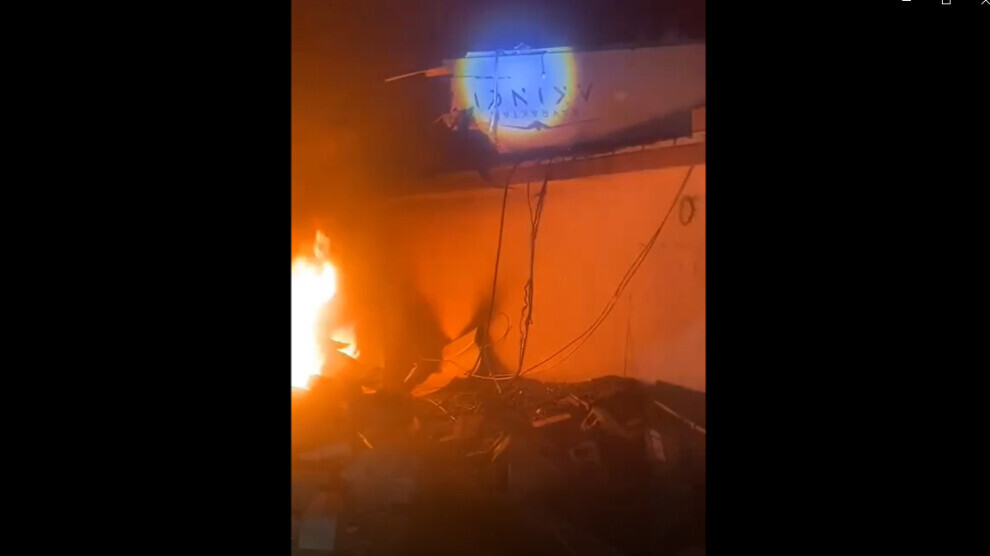SOURCE: AFI


In a striking development in the Qandil region, the Kurdistan Freedom Guerrilla claimed responsibility for shooting down a Turkish state AKINCI-type drone, a high-altitude long-endurance (HALE) unmanned combat aerial vehicle (UCAV) manufactured by Baykar.
The incident has sparked discussions about the vulnerabilities of advanced unmanned aerial systems (UAS) in contested airspace and raised questions about their perceived invincibility, particularly for nations like Pakistan, which have heavily invested in Turkish drones such as the AKINCI and the Bayraktar TB2. With recent incidents, including a Bayraktar AKINCI crash in Libya and underwhelming performances in the Ukraine conflict, the sheen of these drones as game-changers in modern warfare is increasingly being called into question.
The downing of the AKINCI drone in Qandil, a mountainous region often associated with Kurdish resistance, marks a significant achievement for the Kurdistan Freedom Guerrilla. While details of the operation remain scarce, the group claimed that the drone was engaged in reconnaissance or strike missions against their positions when it was targeted. The AKINCI, known for its advanced capabilities—including a 5.5-ton maximum takeoff weight, over 1,350 kg payload capacity, and sophisticated avionics like air-to-air radar and synthetic-aperture radar—has been a cornerstone of Turkey’s aerial operations against Kurdish forces in the region.
The incident underscores the evolving nature of asymmetric warfare, where non-state actors are increasingly capable of countering high-tech military systems. The Kurdistan Freedom Guerrilla likely employed advanced anti-aircraft measures, possibly shoulder-fired missiles or electronic warfare tactics, to bring down the drone. This event exposes a critical vulnerability: even advanced UCAVs like the AKINCI are not immune to determined adversaries in contested airspace.
Pakistan, which has acquired the AKINCI-type drone along with the Bayraktar TB2, may find the Qandil incident a sobering reminder of the limitations of these systems. The Pakistan Air Force (PAF) has integrated these Turkish-made drones into its air defense network, deploying them for intelligence, surveillance, and reconnaissance (ISR) missions as well as assault operations. Satellite imagery has confirmed the presence of these drones at PAF bases, with the Bayraktar TB2, in particular, being showcased as a symbol of Pakistan’s growing military modernization.
The Pakistani military has often touted the acquisition of these drones as a strategic move to bolster its capabilities, especially in the context of regional tensions with India. The AKINCI, with its ability to mimic fighter jet operations and carry both air-to-air and air-to-ground munitions, was seen as a force multiplier. Similarly, the Bayraktar TB2, a medium-altitude long-endurance (MALE) drone, gained fame for its affordability and combat performance in conflicts like Nagorno-Karabakh, Libya, and initially in Ukraine. However, the recent string of incidents—starting with the Qandil shootdown, a Bayraktar AKINCI crash in Libya earlier this year, and poor showings in Ukraine—casts a shadow over their effectiveness in high-threat environments.
Earlier this year, a Turkish-made Bayraktar AKINCI drone crashed in Libya, marking the first recorded loss of this model in the North African country. Images and videos of the wreckage, found near Agilata between Tripoli and the Tunisian border, circulated widely online. The Libyan Air Force, which had recently acquired the AKINCI for counter-smuggling operations, was reportedly operating the drone out of Misrata Air Base. While the exact cause of the crash remains unclear—some sources suggest it may have been shot down by forces loyal to General Khalifa Haftar’s Libyan National Army (LNA)—the incident highlighted the drone’s susceptibility to ground-based threats in contested regions.
Similarly, the Bayraktar TB2, often hailed as a revolutionary weapon during the early stages of the Ukraine conflict in 2022, has seen its effectiveness wane over time. Initially celebrated for its role in targeting Russian convoys and artillery, the TB2 became a symbol of Ukrainian resistance. However, as Russia adapted its air defense tactics, deploying more sophisticated electronic warfare systems and layered air defenses, the TB2’s utility diminished. Reports indicate that Ukrainian forces have shifted to using smaller, cheaper drones for ISR and strike missions, as the TB2 proved too vulnerable to operate in heavily defended areas. The drone’s inability to evade advanced air defenses has led to numerous losses, with several being shot down by Russian forces.
Both the AKINCI and the Bayraktar TB2 have been heavily promoted—by Turkey, Pakistan, and other operators—as platforms capable of shifting the tide of war. Turkish manufacturer Baykar and its advocates have often portrayed these drones as near-invincible tools of modern warfare, capable of precision strikes, long-endurance missions, and seamless integration into networked operations. Pakistan, in particular, has leveraged this narrative to project an image of technological superiority in its regional military posture.
However, the reality on the ground tells a different story. The Qandil shootdown, the Libya crash, and the struggles in Ukraine collectively demonstrate that these drones are far from infallible. In contested airspace—where adversaries possess even modest anti-aircraft capabilities or electronic warfare tools—UCAVs like the AKINCI and TB2 remain vulnerable. Their reliance on satellite communication for long-range operations makes them susceptible to jamming, while their relatively slow speeds and lack of stealth features render them easy targets for radar-guided missiles or fighter jets.
For Pakistan, this should serve as a wake-up call. While the AKINCI and TB2 undoubtedly enhance ISR and strike capabilities, they are not a panacea for modern warfare challenges. Overreliance on these systems without investing in countermeasures—such as electronic warfare suites, decoys, or manned-unmanned teaming concepts—could leave the PAF exposed in a high-intensity conflict, particularly against a well-equipped adversary like India, which possesses advanced air defense systems and fighter jets capable of neutralizing UAVs.
NOTE: AFI is a proud outsourced content creator partner of IDRW.ORG. All content created by AFI is the sole property of AFI and is protected by copyright. AFI takes copyright infringement seriously and will pursue all legal options available to protect its content.